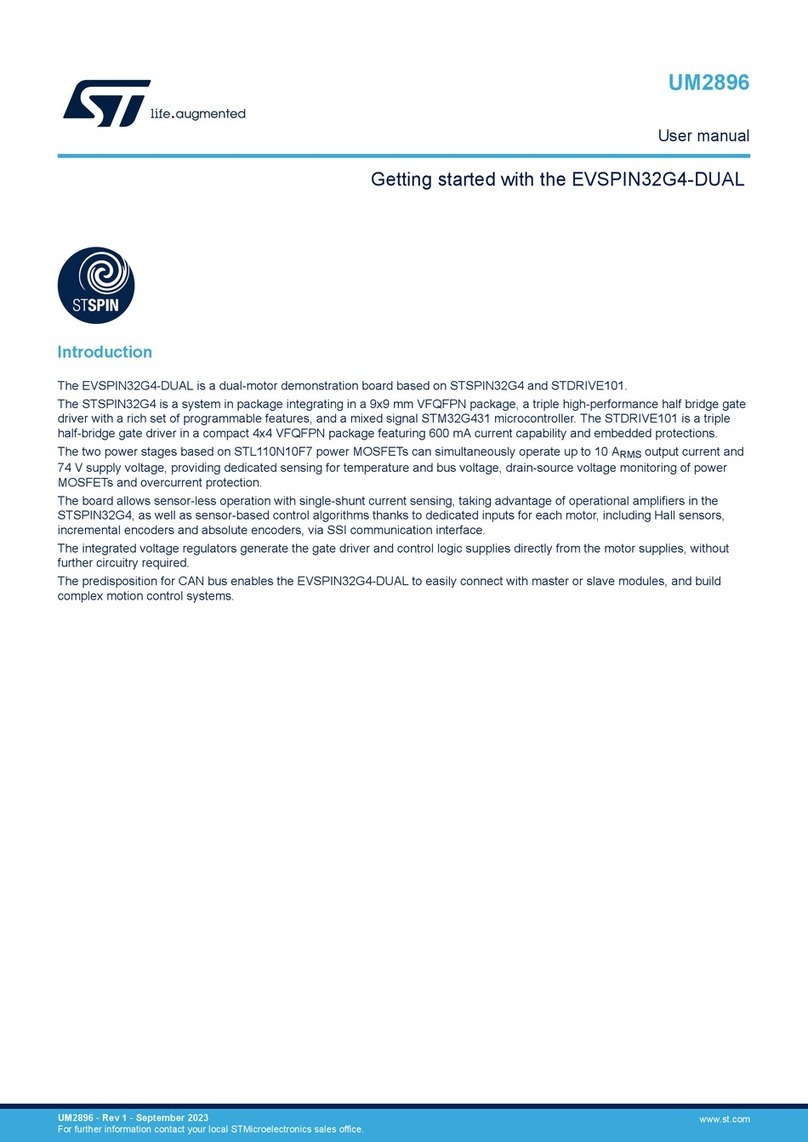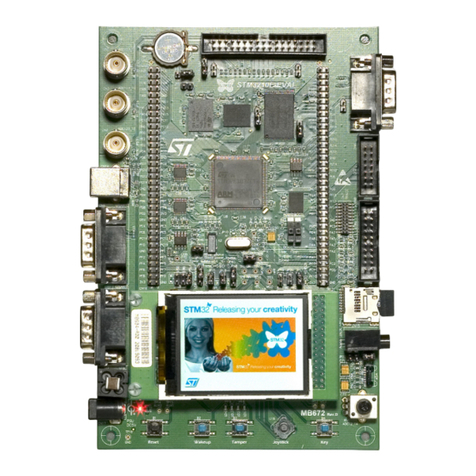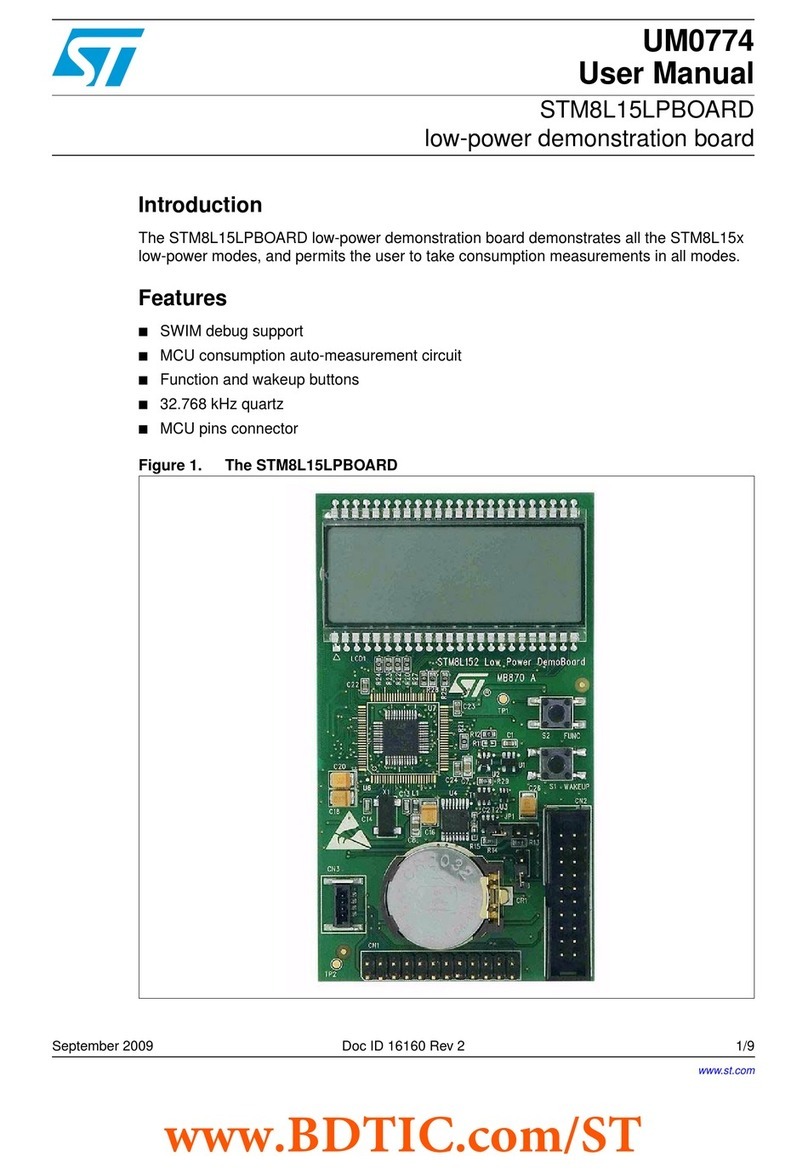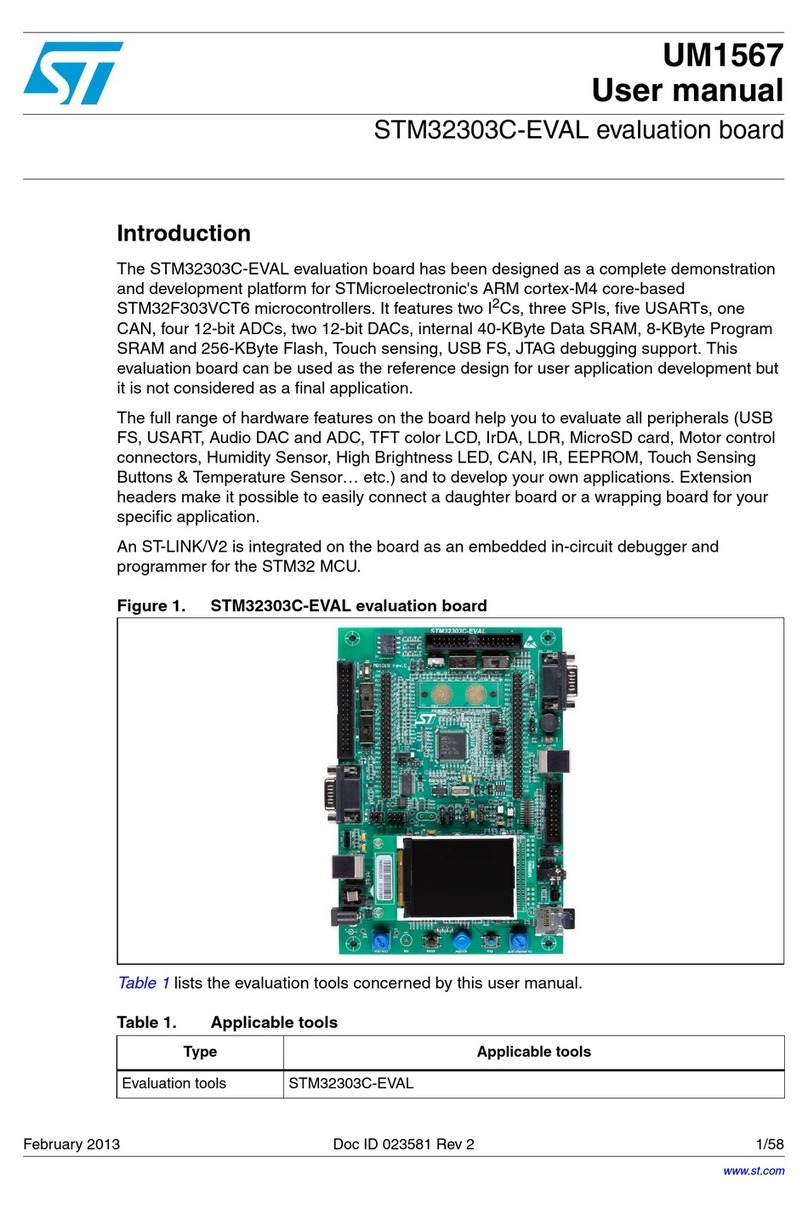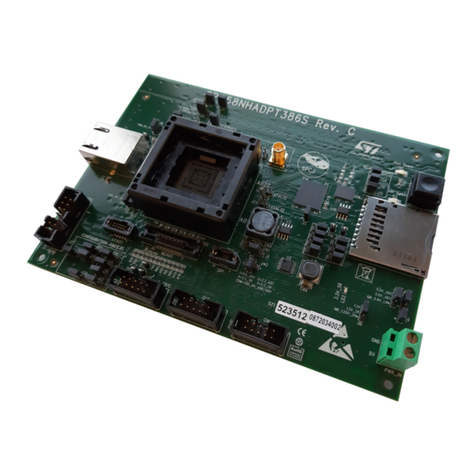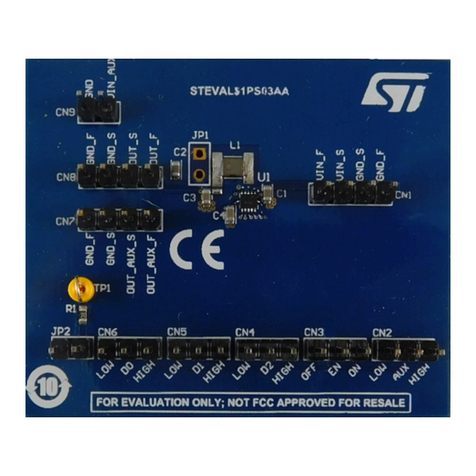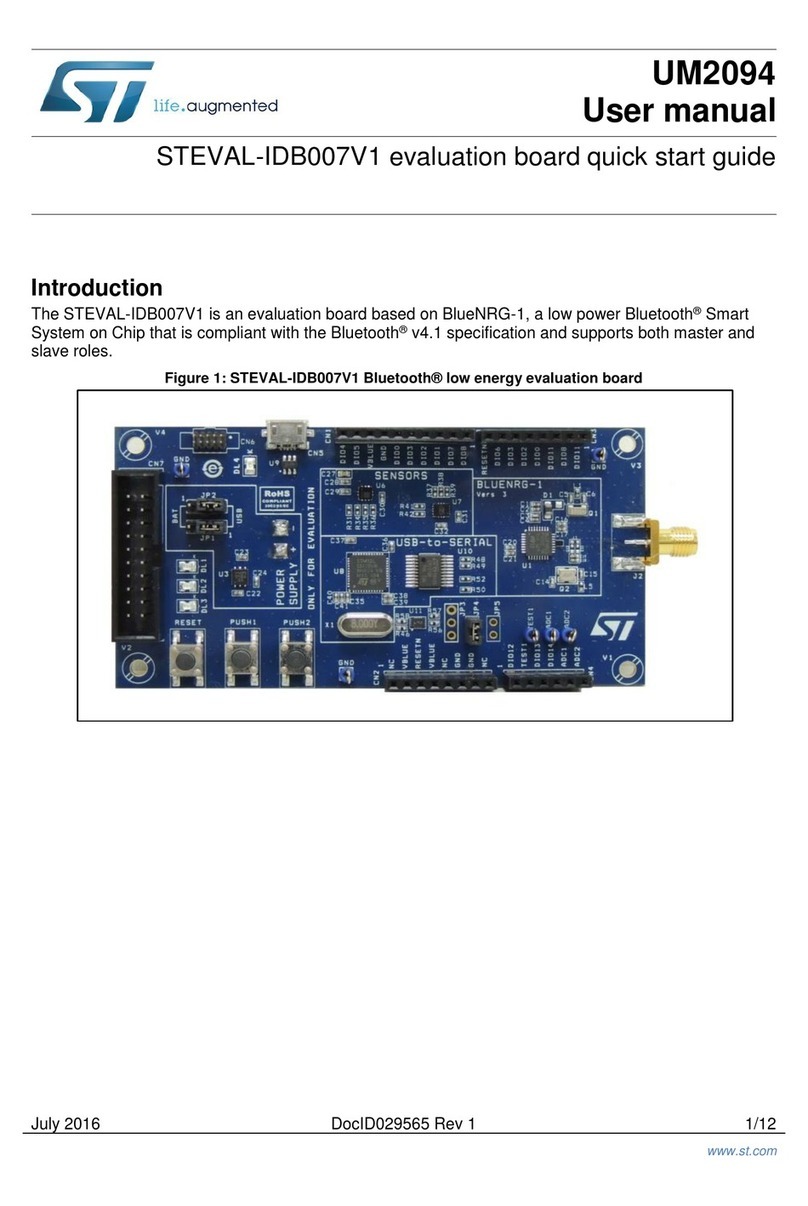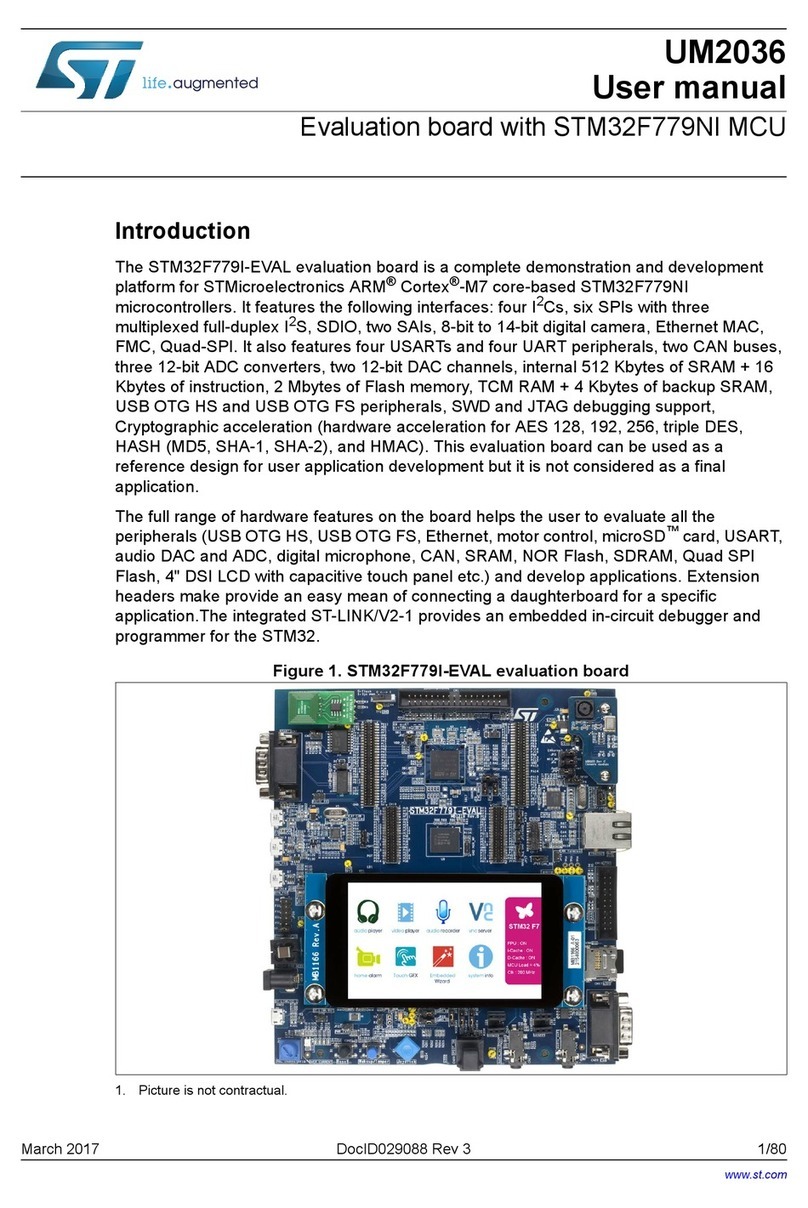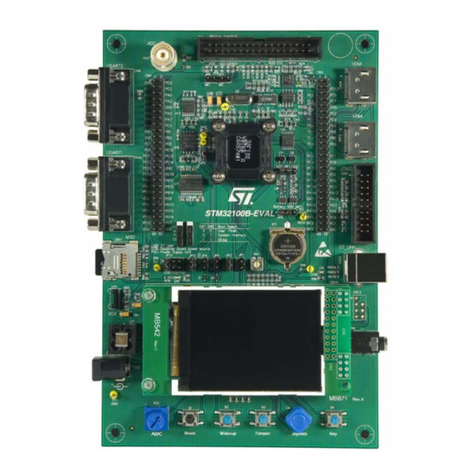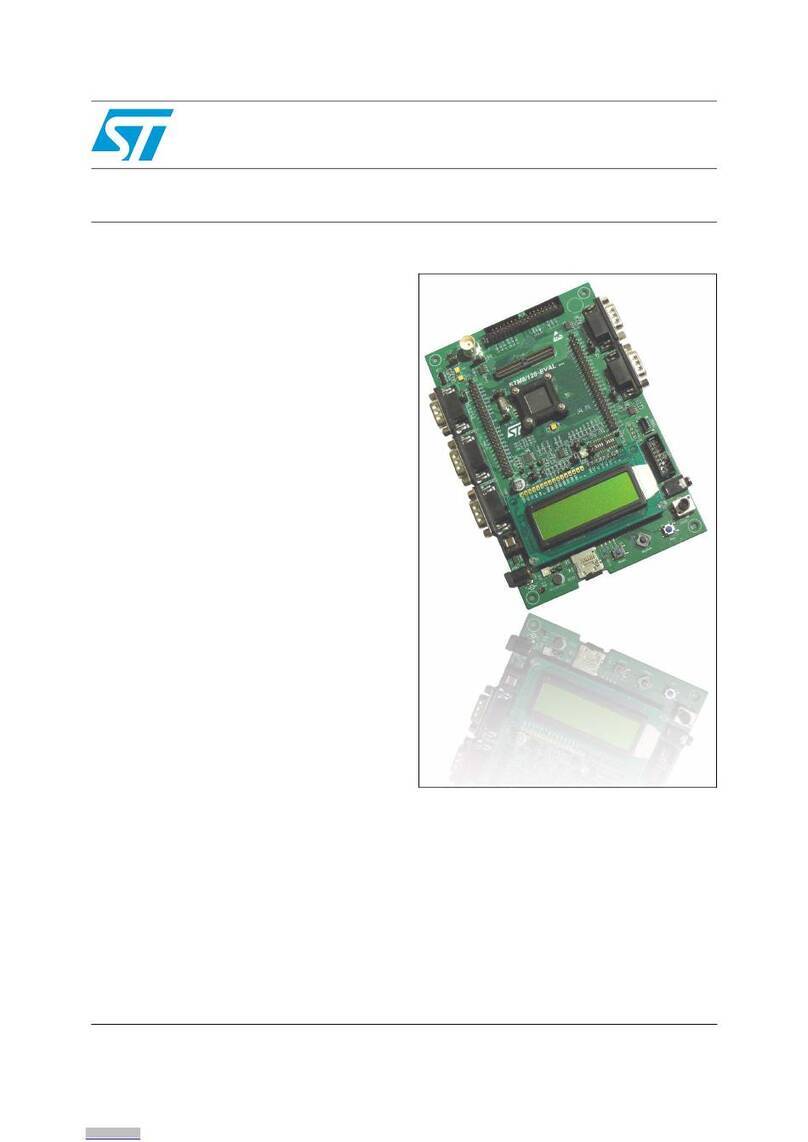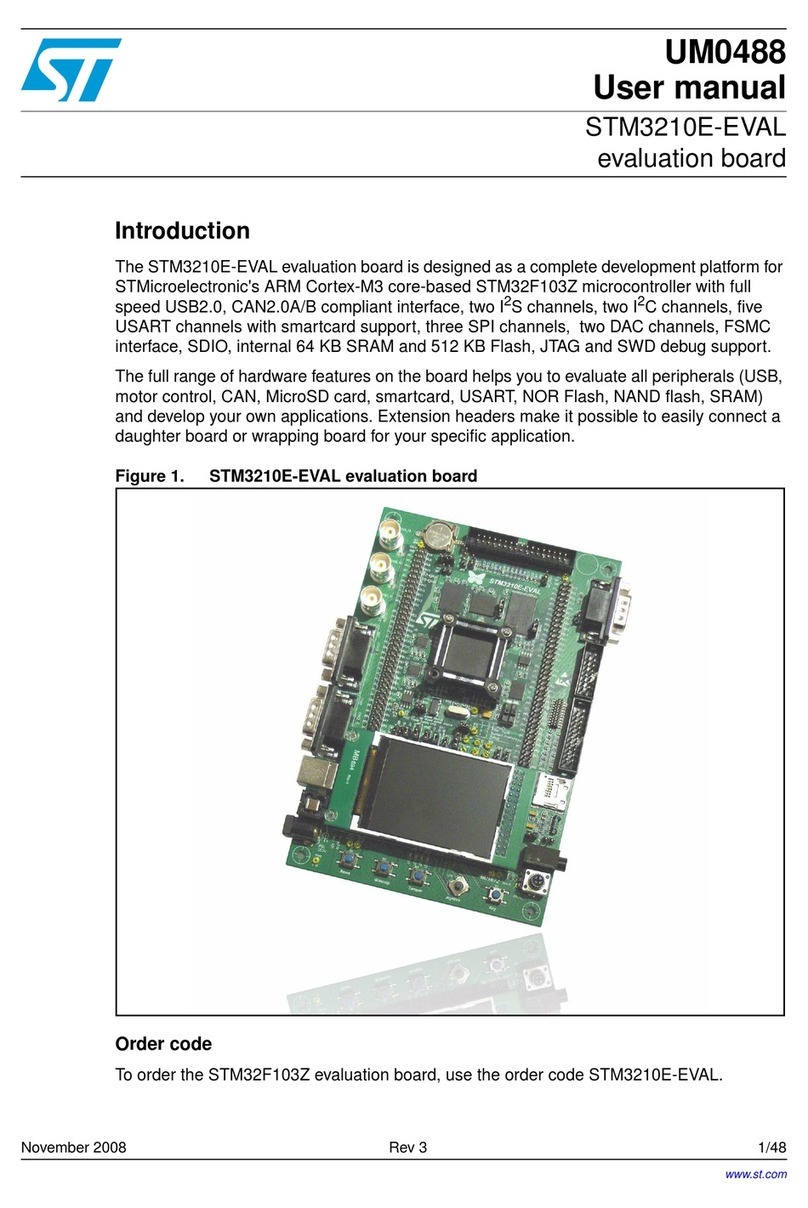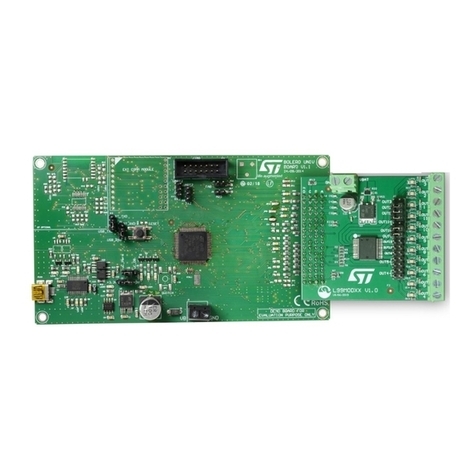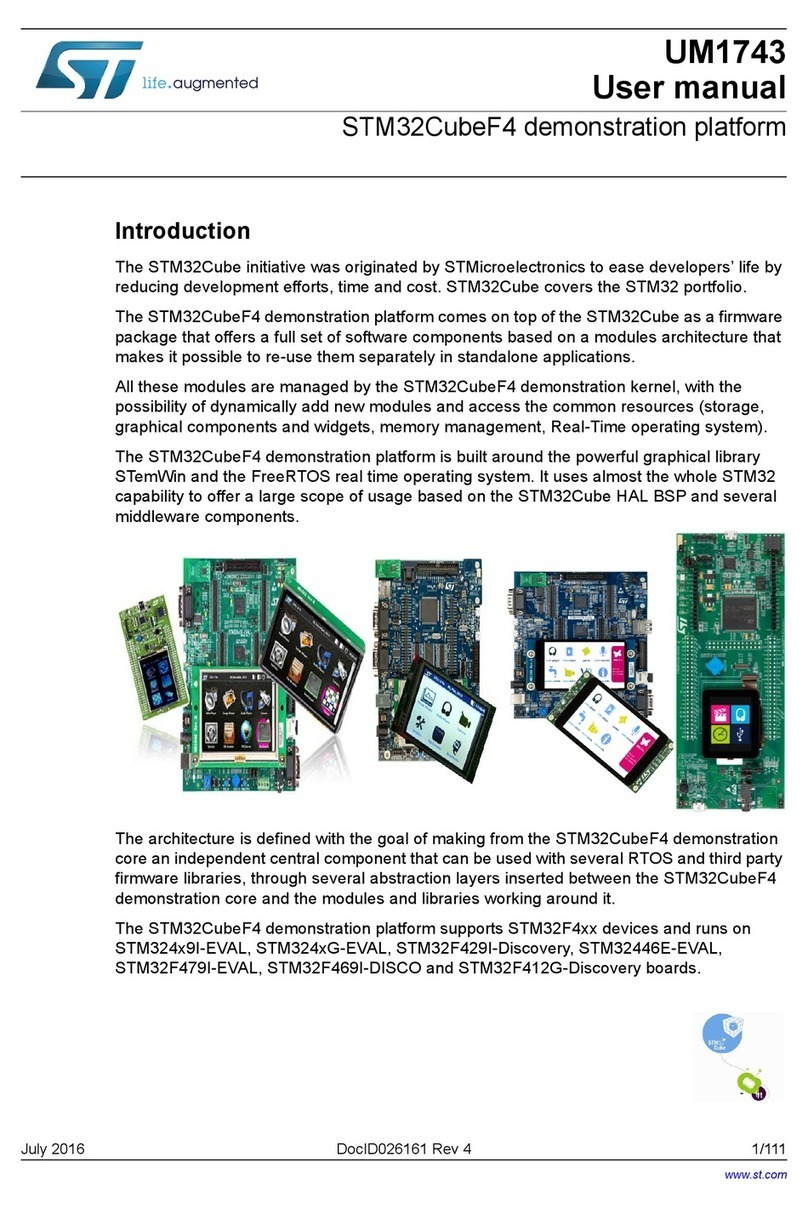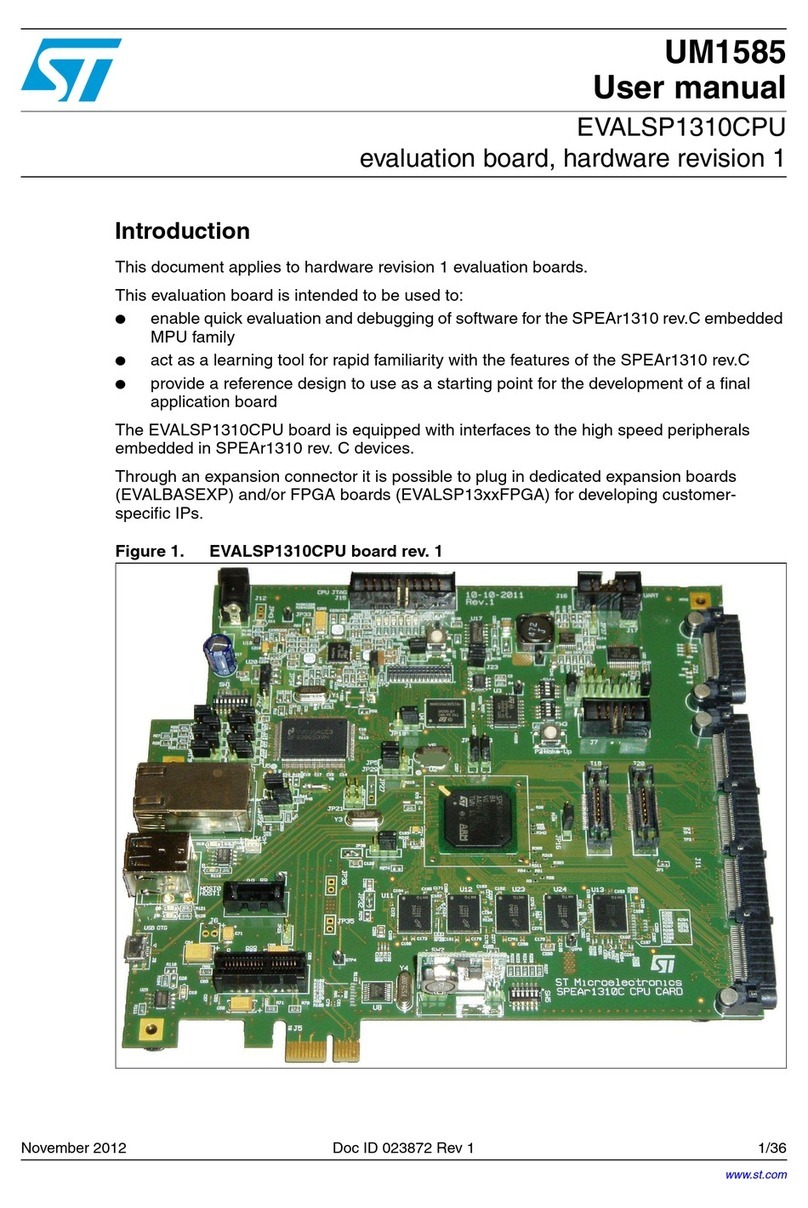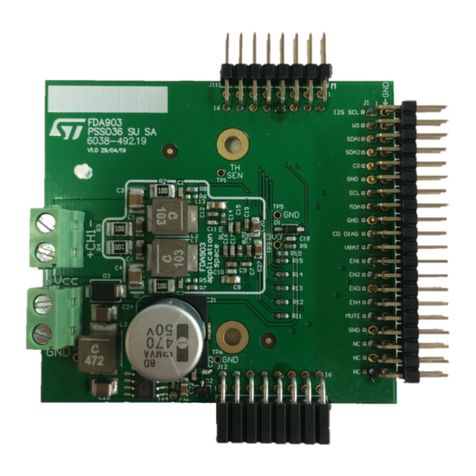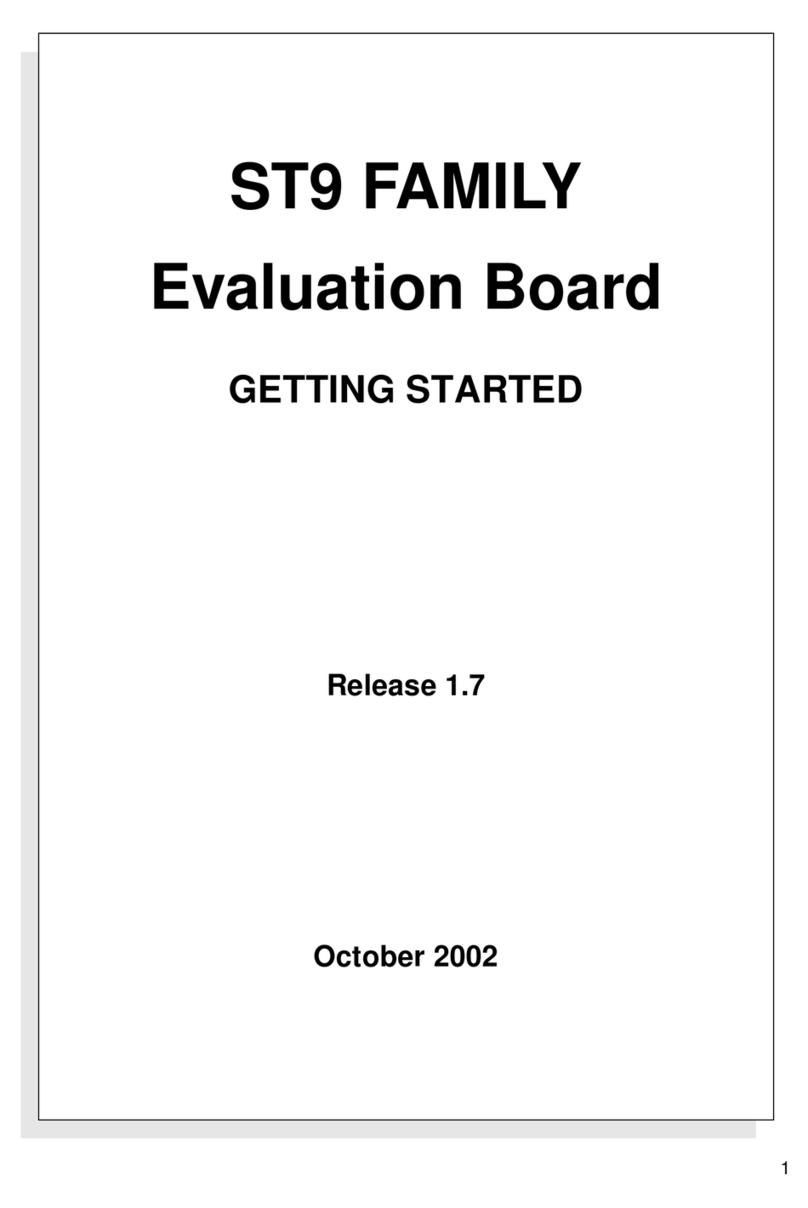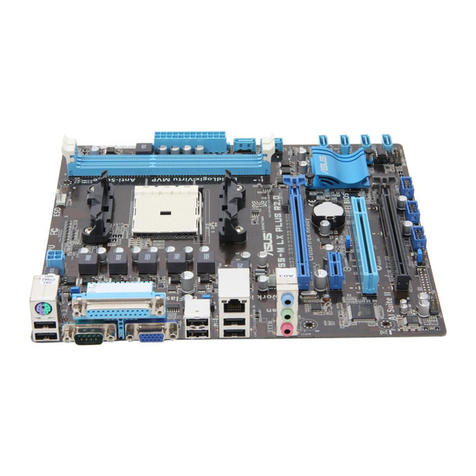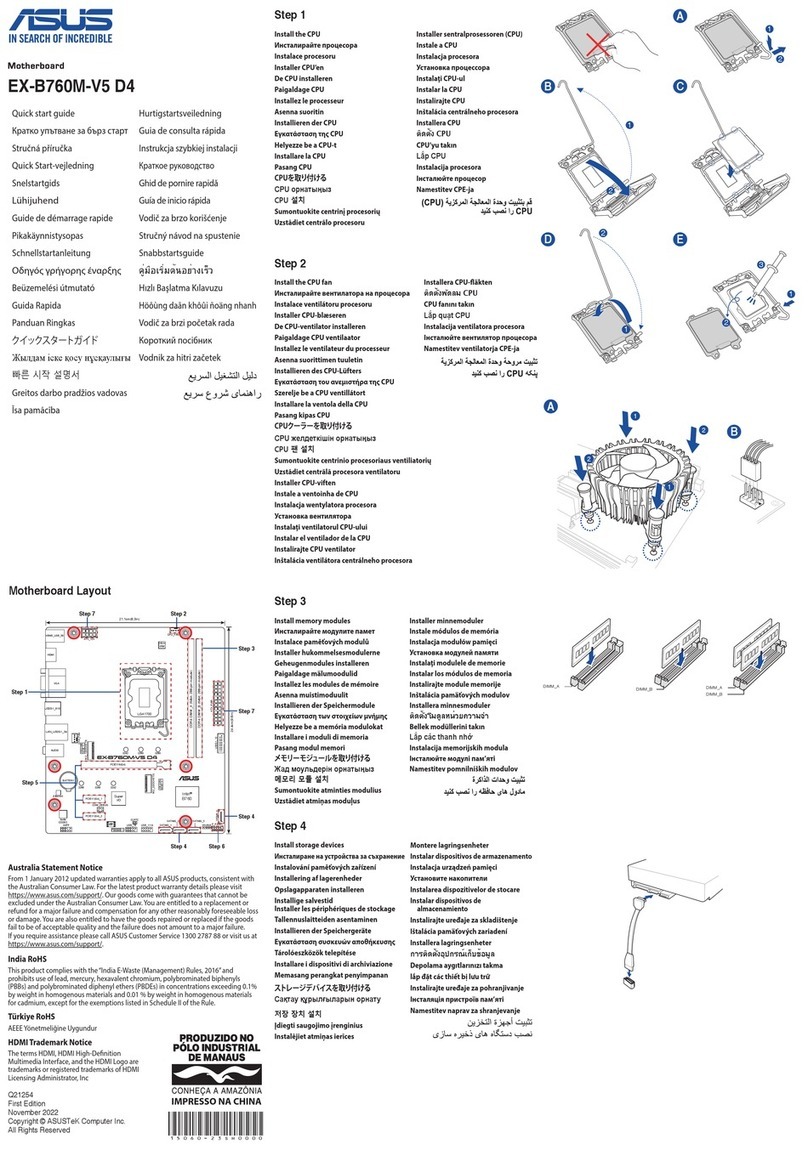
UM0696 Starting PractiSPIN™.spmd
Doc ID 15599 Rev 2 5/15
2 Starting PractiSPIN™.spmd
Since the PractiSPIN™.spmd system is capable of supporting several module
demonstration boards the user must first select the module that is evaluated.
●Module demonstration board set up: configure the jumpers/switches on the target
board and the control board as described in the paragraph for the specific
demonstration board being used.
●Control board - PC connection: connect the control board to a serial COMM port of the
PC via a standard (straight through) 9 pin D connector cable.
●Powerup: energize the power supply
●Start PractiSPIN™.spmd software: on the PC, start the PractiSPIN™.spmd program
●Communication settings: click the drop down list under "port selection" and select the
COMM port being used. Baud rate and other communication parameters are fixed on
both sides of the link and do not need to be set.
●Establish COMM link: click the "connect to ST7 hardware". At this point the
PractiSPIN™.spmd software transmits several commands to the control board to
initialize the processor. The PractiSPIN™.spmd software reads the revision code of the
firmware currently stored in the Flash memory of the ST7 and determine if the correct
version of firmware resides in the ST7. If the PractiSPIN™.spmd software detects that
a firmware update is necessary, either because there is an old version of firmware or
the firmware currently in the Flash memory is not the correct firmware for the motor
type selected, one or more dialogue boxes appear asking if the program should
proceed with the update. Accept the updates and the PractiSPIN™.spmd software
automatically updates the firmware. The system then initializes the settings to the last
stored settings and open the appropriate PractiSPIN™.spmd software for the selected
target board.
Figure 2. PractiSPIN™ launch window
●Calibrate current setting: when communication is established the user has the option to
adjust the offset and maximum current settings. If this is the first time you use the
system, calibration may be needed to adjust out the offset in the reference bias
circuitry. Calibration ensures that the reference voltage provided to target module
follows the PractiSPIN™.spmd software current settings. Calibration is a two-step
process; first the offset is adjusted then the maximum current is set. Clicking on
"connect ST7 hardware" button, the calibration window appears.
AM04220v1
